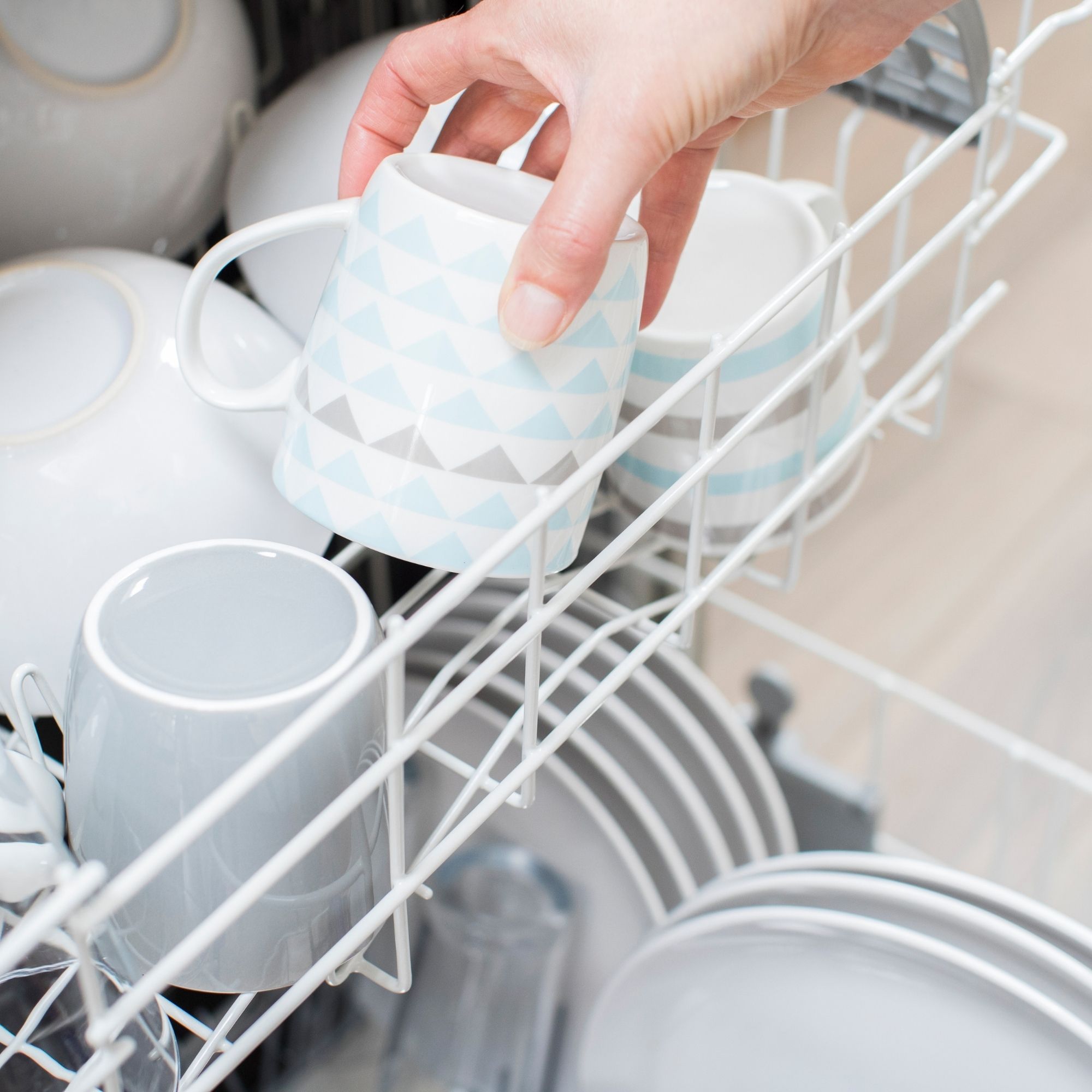How To Load A Dishwasher Efficiently
Loading the dishwasher properly ensures that your dishes come out nice and clean and improves the efficiency of your appliance. Loading and unloading the dishwasher can seem like a chore and there’s nothing worse than doing this job, only to open the dishwasher a few hours later and find that some of the dishes aren’t even clean! We’re here to make this an easier job to do and to improve the cleanliness of the dishes that come out.

Scrap The scraps
Scrape off any remaining food from your plate before your put it into the dishwasher. If you leave your food on your plate, it will clog up your dishwasher and cause damage. This is a much more difficult task to fix than just removing the food before it is loaded.
Small Dishes At The Top
Load mugs, cups, glasses, small bowls and dishwasher safe plastic into the top of the dishwasher. Ensure that they are facing down. You don’t want them to fill up with dirty water! Long utensils such as spatulas or ladles should also go on the top rack and should be placed flat. Load the mugs between the tines at the side, and the bowls in the middle. For more delicate dishes such as wine glasses, keep them separated so that they don’t crash into each other and break. If your dishwasher has stemware holders, use these for wine glasses to give them extra protection. Never place plastic items in the bottom of the dishwasher as the heat can melt or warp the shape of the plastic.
Big Dishes At The Bottom
Load any plates, large bowls or other large items such as pots and pans into the bottom of the dishwasher. Place the plates into the slots and face them towards the centre so that they are facing towards the water jets. Try and angle all of the dishes downwards to face the sprayer and will drain better. Any flat pans or dishwasher-safe baking dishes should be placed at the sides or at the back so that they do not block the water. If they are placed at the front then they may also block the detergent.
Avoid Overcrowding
Make sure that there is some separation between items. Try not to overcrowd the dishwasher as this can prevent the water jets from being able to reach everywhere. You don’t want dishes blocking other dishes from being cleaned or else they will have to be cleaned again. Dishes are also more likely to get broken in an overcrowded dishwasher.
Cutlery In The Cutlery Basket
Cutlery such as knives, spoons and forks should go in the cutlery basket. Make sure to place any sharp knives facing downwards so that no one cuts themselves when trying to empty the dishwasher. Spoons and forks clean better if they are inserted with the handles down. Like the rest of the dishwasher, the cutlery basket should not be overcrowded or else all of the cutlery will not be cleaned.
Once your dishes are loaded, check that the rotating devices can spin freely, add your detergent, select your wash and dry settings and press start. When adding your detergent, fill to the line of the container on the bottom or door of your dishwasher. If your dishwasher uses pellets, only use one. While loading your dishwasher properly is the key to maximum cleanliness, some of our dishwashers also have special smart sensors that can measure how dirty your dishes are and can calculate the amount of time and water that is required to wash your dishes.
Recent Posts
-
Why do I need an Outdoor Kitchen?
Outdoor kitchens have transformed from a luxury addition to a sought-after feature in homes across I …30th May 2024 -
Choosing the Perfect Washing Machine for Your Home
Choosing the right washing machine Ireland for your home is crucial to optimizing your laundry routi …21st May 2024 -
Revolutionise Your Haircare Routine with the Shark Hair Dryer
Your haircare routine deserves a boost with the innovative Shark Hair Dryer, designed to elevate you …17th May 2024









